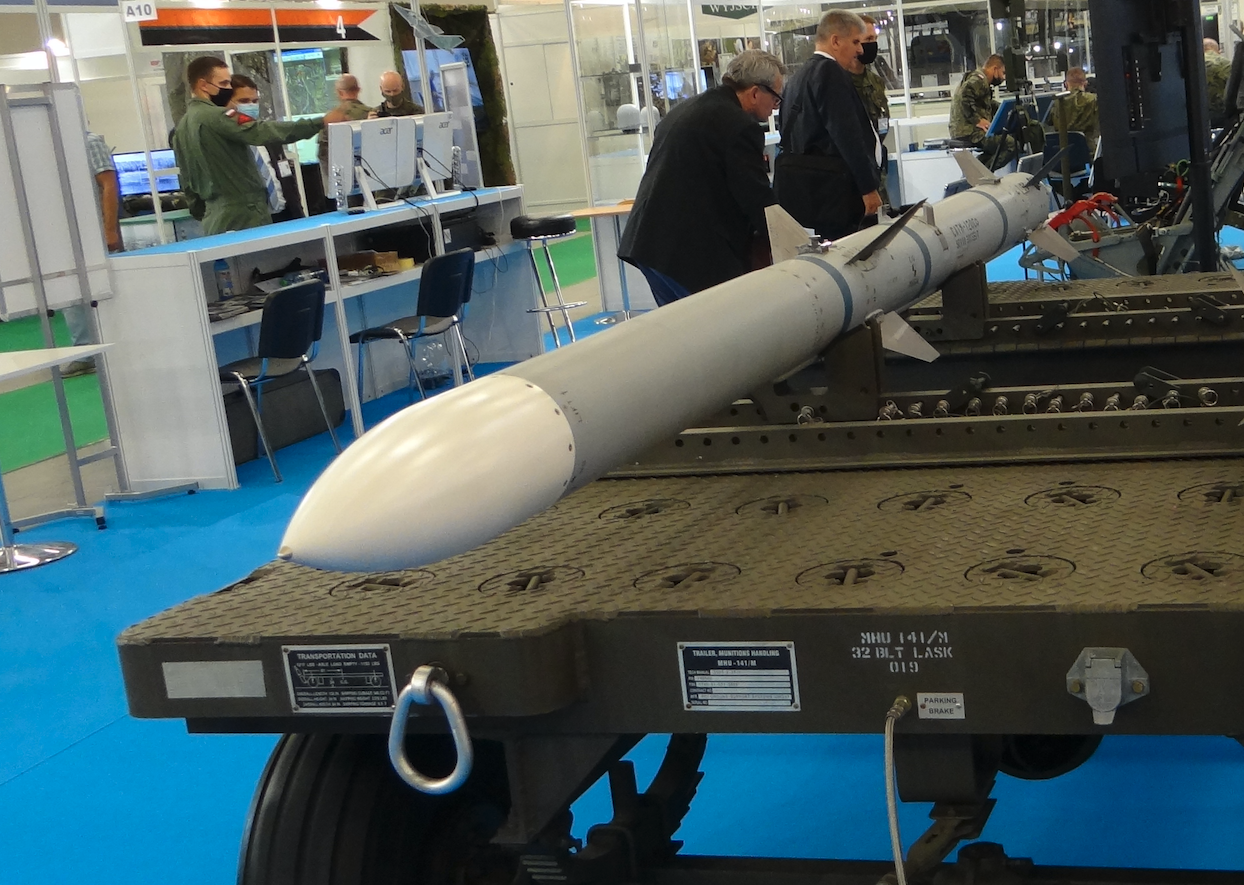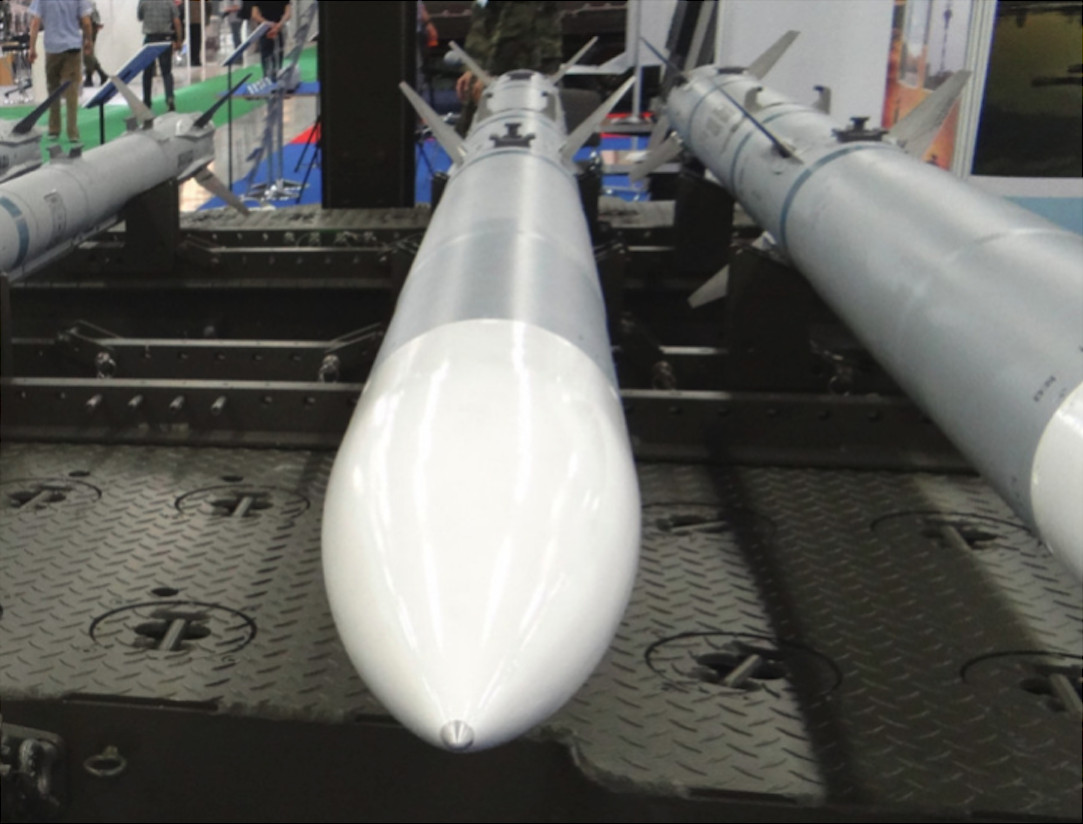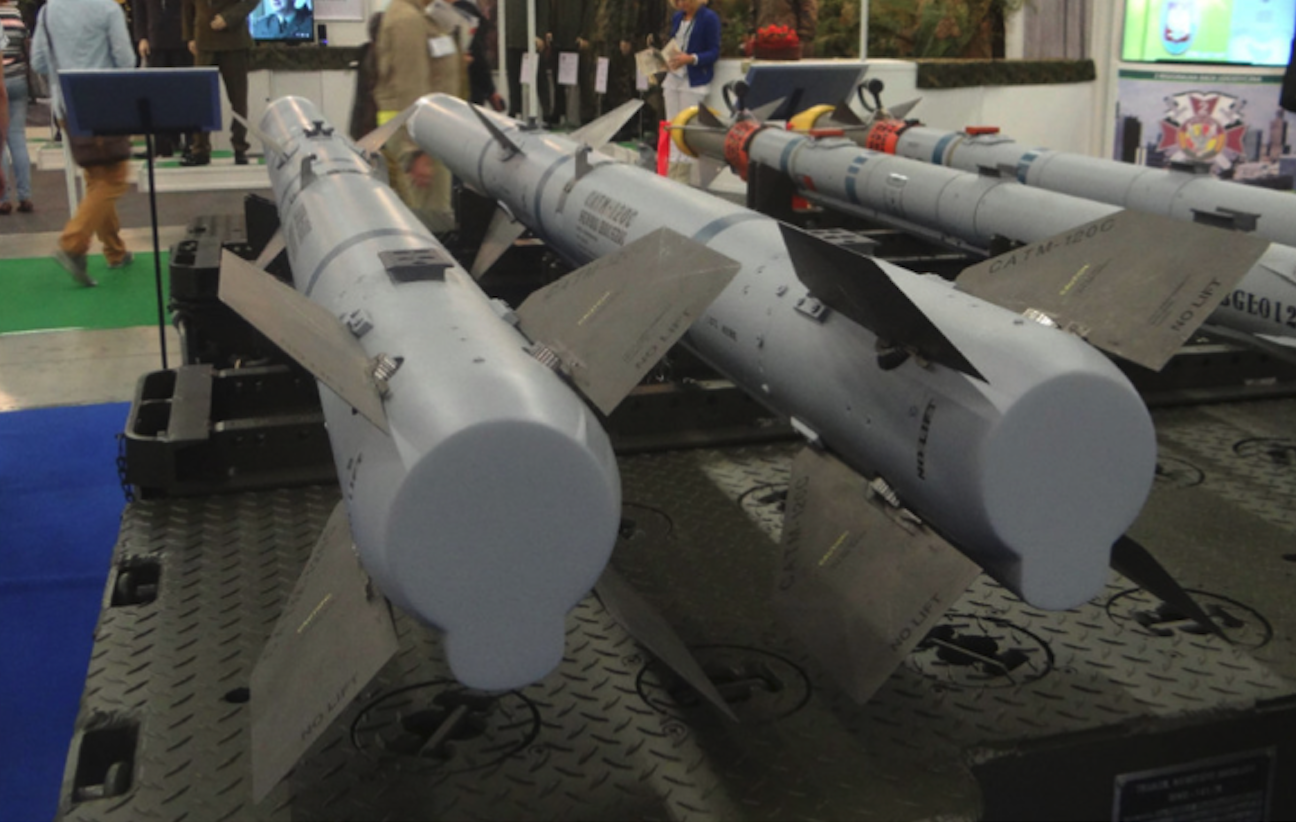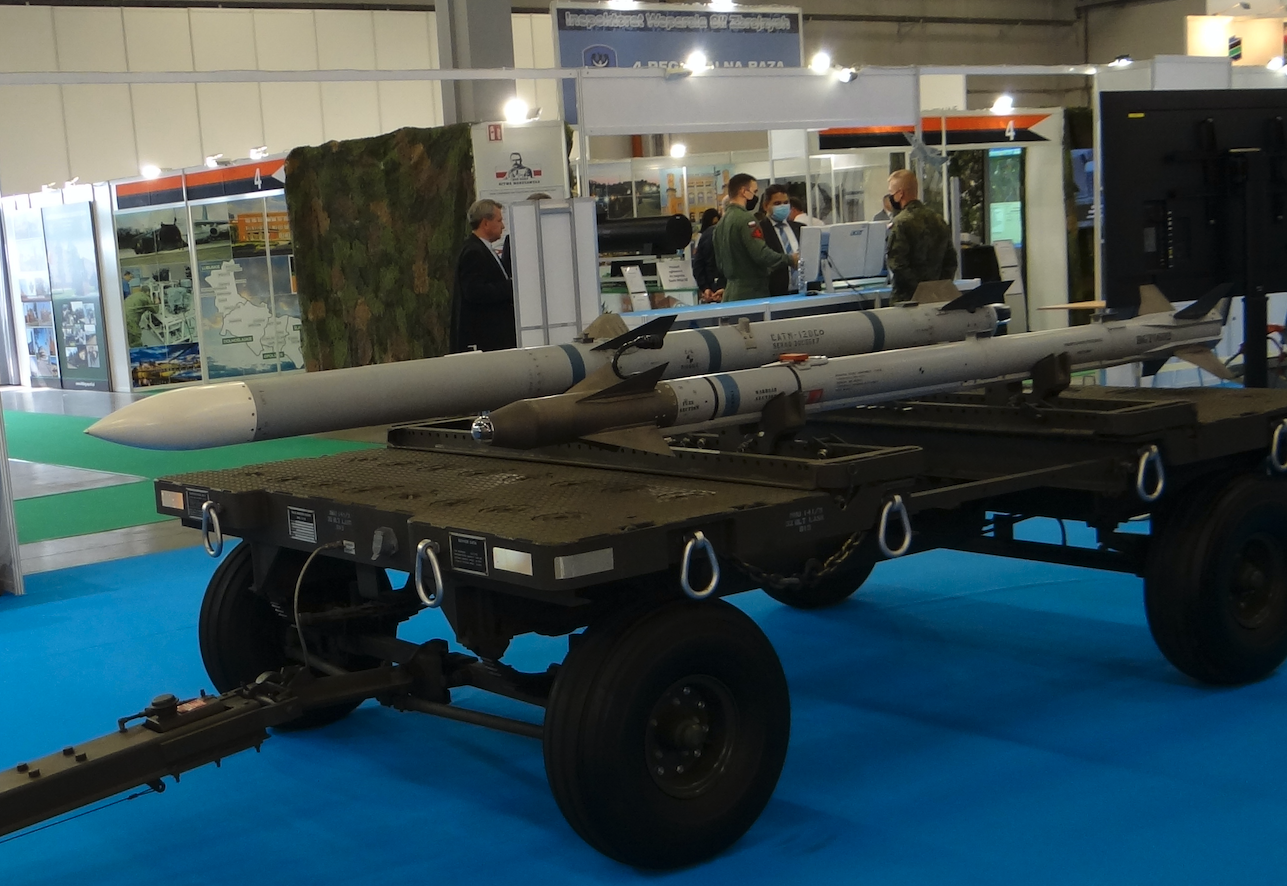Kraków 2022-10-25
Pocisk Hughes – Raytheon AIM-120 AMRAAM.
AIM-120 AMRAAM (Advanced Medium-Range Air-to-Air Missile) to jest Amerykański pocisk kierowany klasy powietrze – powietrze. Pocisk należy do pocisków średniego zasięgu. Ma aktywny radiolokacyjny układ naprowadzania, korygowanym systemem nawigacji bezwładnościowej INS.
Opis zdjęcia: Na pierwszym planie pocisk treningowy CATM 9X-2.
Historia pocisku AIM-120 AMRAAM.
Przez wiele lat, drugim obok pocisku AIM-9 Sidewinder, był pocisk AIM-7 Sparrow. Należał on do pocisków średniego zasięgu z naprowadzeniem radiolokacyjnym, stosowanym dojść powszechnie w krajach NATO. Niestety, nie udało się opracować i wyprodukować w pełni zadowalającego środka walki. Prawdopodobieństwo osiągnięcia celu przez pocisk wynosił tylko 60-80 %. Często występowały awarie i wzrastała czasochłonność obsługi.
W połowie 70-lat XX wieku, USA zaproponowały współpracę pozostałym krajom paktu NATO, do wspólnego opracowania nowego pocisku kierowanego radiolokacyjnego, o zasięgu 5 000 – 70 000 m. Dzięki współpracy międzynarodowej, koszt opracowania byłby mniejszy, a wielkoseryjna produkcja pozwoliłaby na korzystne skalkulowanie ceny za jeden pocisk. Wkrótce program poszerzono, o pocisk krótkiego zasięgu kierowany termicznie. W kolejnej umowie USA miały opracować pocisk średniego zasięgu AMRAAM, a Europa Zachodnia krótkiego zasięgu ASRAAM. Lecz Europa Zachodnia opracowała dwa pociski. AIM-132 ASRAAM krótkiego zasięgu i MBDA Meteor średniego zasięgu. Reakcją USA na taką sytuację było wycofanie się z układu i kontynuowaniu samodzielnie pracy nad AMRAAM i rozwijaniu AIM-9 Sidewinder.
USAF ogłosiła konkurs na AMRAAM w którym wzięło udział 5 firm. W 1979 roku, wybrano projekty firma Raytheon i Hughes. Po licznych testach w grudniu 1981 roku, ogłoszono, że zwycięzcą została firma Hughes. Wówczas przewidywano, że pocisk wejdzie do służby w 1986 roku. Produkcje seryjną szacowano na 120 000 sztuk w tym 20 000 sztuk dla USAF. Masa pocisku miała wynieść 148 kg, masa głowicy 23 kg. Firma otrzymała kontrakt na budowę prototypu naturalnej wielkości i kolejne testy. W 1987 roku, zawarto kontrakt na budowę serii próbnej i to z obiema firmami; Raytheon i Hughes. Pocisk oznaczono AIM-120 A, ale co ciekawe pozostawiono także nazwę AMRAAM. Zbudowano około 200 sztuk, które weszły na uzbrojenie w 1991 roku, i zostały użyte operacyjnie w 1993 roku.
AIM-120 AMRAAM został opracowany w konwencji poprzednika, czyli AIM-7. Pocisk AIM-120 jest pociskiem kierowanym zdolnym do zwalczania celi poza zasięgiem widoczności (BVR – Beyond Visual Range). Może być użyty w każdych warunkach pogodowych oraz w dzień i w nocy. AIM-120 AMRAAM ma rozbudowany system naprowadzania, który jest dwustopniowy: bezwładnościowy i aktywny-radiolokacyjny. Aktywnie prowadzi go wbudowana stacja radiolokacyjna, a jeśli jej zasięg jest zbyt mały, to pierwsze prowadzenie wykonuje bezwładnościowy system nawigacyjny. Przy znacznych odległościach pocisk wspomaga system radiolokacyjny zamontowany na pokładzie samolotu (nosiciela lub latającego stanowiska dowodzenia). Przed odpaleniem system bezwładnościowy pobiera konieczne dane o celu. System bezwładnościowy doprowadza pocisk na odległość wystarczającą do autonomicznego przejęcia celu przez pocisk. Na mniejszych odległościach pocisk należy to klasy odpal i zapomnij (fire and forget), czyli natychmiast po strzale pilot może zająć się innym celem.
AIM-120 AMRAAM w porównaniu do poprzednika AIM-7 Sparrow, jest lżejszy, mniejszy, szybszy, bardziej zwrotny. Jest mniej zależny od nosiciela, a dodatkowo może współpracować z latającym stanowiskiem dowodzenia, z którego otrzymuje część danych o celu. Jest mniej wrażliwy na echa radarowe odbite od ziemi. Jest bardziej niezawodny i wymaga mniej czasu dla obsługi. Przy znacznych odległościach korekta trajektorii lotu odbywa się w pewnych odstępach czasu.
Opracowano kolejno zmodernizowane wersje: AIM-120 A, AIM-120 B, AIM-120 C, a każda z nich występowała w kilku odmianach. Od 1999 roku, jest produkowana wersja AIM-120 C. Prace nad nowymi wersjami są w dalszym ciągu prowadzone. Pocisk jest przeciwlotniczy i anty-balistyczny, czyli może zwalczać pociski rakietowe dalekiego zasięgu (strategicznego, międzykontynentalnego i globalnego), zanim te osiągną cel. Na bazie AIM-120 AMRAAM opracowano naziemne (nawodne) przeciwlotnicze zestawy rakietowe. Producentem pocisków są nadal firmy Raytheon i Hughes.
Polska dla swoich samolotów F-16 Jastrząb zakupiła wersje AIM-120 C-5 AMRAAM Podstawowe dane AIM-120 C-5 AMRAAM: wymiary długość 3,66 (3,70) m, średnica 178 mm, rozpiętość 526 mm, masa 152 kg, silnik rakietowy na paliwo stałe, prędkość max Ma-4 (4 896 km/h), zasięg 105-110 km, głowica odłamkowo-burząca o masie 18 kg. Pocisk korzysta z wyrzutni LAU-129 E/A. W pierwszej dostawie zamówiono 200 sztuk pocisków.
Opracował Karol Placha Hetman




